#yellow-backed duiker
Text
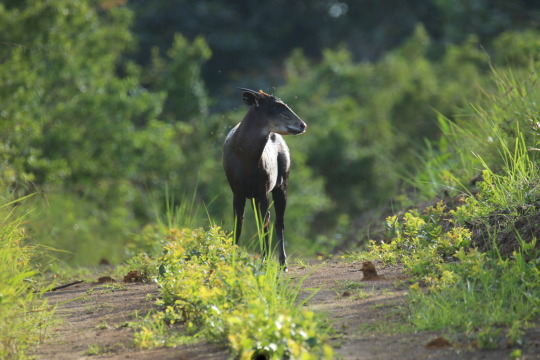
Yellow-backed duiker Cephalophus silvicultor
Observed by bureaubenjamin, CC BY-NC
13 notes
·
View notes
Text

Yellow-backed duiker (Cephalophus silvicultor)
The most widespread species of duiker, these can be found in forests across tropical Africa. They eat mostly fruits, but also leaves, roots, and occasionally small animals. The word duiker comes from the Dutch and Afrikaans word for ‘diver’, which refers to these antelopes’ habit of diving into the underbrush when threatened.
#markhors-menagerie#animal facts#animals#biology#fun facts#ungulates#even toed ungulates#ruminants#bovidae#antelope#duiker#yellow-backed duiker
7 notes
·
View notes
Text
Some more Yellow-backed Duiker, this time ft some yummy cantaloupe! (I believe this one is called Josie!)
#i love watching these dudes eat like what.#surely there was an easier way to do that dude?#katie rambles#zooposting#yellow backed duiker#yellow-backed duiker#duiker
45 notes
·
View notes
Text

firehoof, greyhoof, and ravenhoof
#warrior cats#Firestar#greystripe#ravenpaw#warriors#illustration#drawing#doodle#they are a fallow deer japanese serow and a yellow backed duiker#hoof warriors
1K notes
·
View notes
Text

Brehm's Tierleben. Written by Alfred Brehm. Illustration by Wilhelm Kuhnert. 1922 edition.
Internet Archive
101 notes
·
View notes
Text


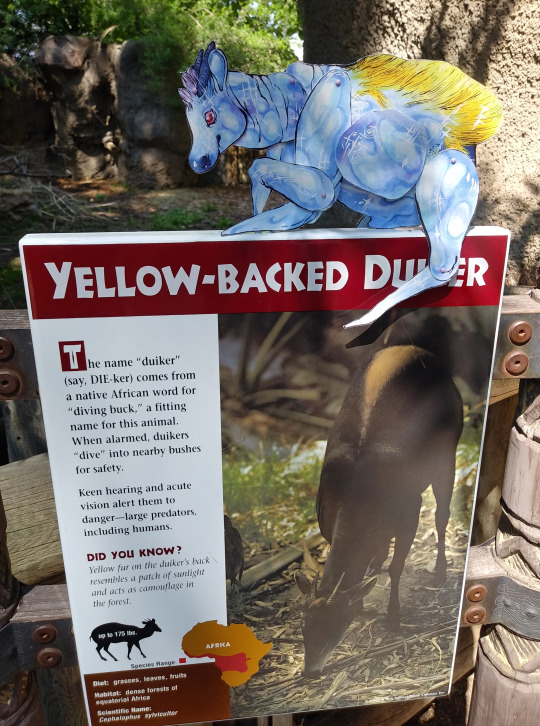
The Duikers actually have since moved to a larger enclosure at the zoo, I remember struggling to get the face right until I realized they had more of a cow look and less of a deer look.
#duiker#yellow backed duiker#paper dolls#papercraft#articulated doll#denver zoo#artists on tumblr#art#mushrooms
5 notes
·
View notes
Text
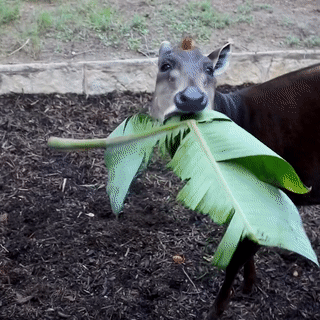

yellow-backed duiker // san antonio zoo
223 notes
·
View notes
Text
took myself off impromptu to one of the local nature reserves on thursday (despite it probably not being a good idea since the rolling black outs often mean no cell phone signal which means. no way of getting home) and w o w did i see a lot
TWO different kinds of duiker, which i haven't seen there in years thanks to local dogs killing them (common grey duiker and a group of blue duiker who hadn't heard that they're supposed to be shy), brown-backed honeybird (!), tambourine dove, sombre + yellow-bellied greenbul (!), palmnut vulture flying overhead (!), southern tchagra (!), cape + chinspot batis, black saw-wing (!), golden-tailed woodpecker, african paradise + african dusky + southern black flycatcher, terrestrial brownbul, green-backed camaroptera, tawny-flanked prinia, red-capped robin-chat, white-browed scrub-robin (!), amethyst + collared sunbird, neddicky, grey waxbill (!), golden-breasted bunting (!), yellow-throated longclaw (!), red-backed mannikin, yellow-fronted canary and the usuals (speckled mousebird, purple-crested turaco, red-eyed dove, fork-tailed drongo, bulbul etc etc). also heard bar-throated apalis, olive sunbird, black-collared barbet, golden-rumped tinkerbarbet, crowned eagle and black-headed oriole.
no new ticks, but two confirmed ticks of the black saw-wings (flitting about on the forests edge) and finally a confirmed visual of the yellow-bellied greenbul. very excited to see the palmnut vulture. grey waxbill was nice too, since i've only seen it once before, and the brown-backed honeybird was only my third sighting. didn't get any photos, i ran out of memory before i'd even left the forest area lol. overall 46 species including calls, which isn't bad for two hours in the afternoon
#on birds#confirmed ticks means i have this ticked off but i have literally no recollection of it/it might not have possibly been that but i was a#zealous child#or i've heard the bird and i've seen brief glimpses but never enough to be confident in ticking it off#also a....lot of domestic rabbits which is concerning#diary
8 notes
·
View notes
Text
Five steps of Wikipedia for Friday, 19th January 2024
Welcome, მოგესალმებით (mogesalmebit), vitajte, nuqneH 🤗
Five steps of Wikipedia from "Moreleta Kloof Nature Reserve" to "American bison". 🪜👣
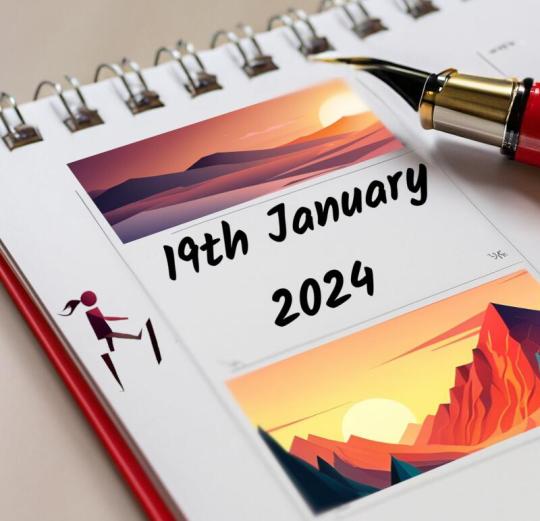
Start page 👣🏁: Moreleta Kloof Nature Reserve
"The Moreleta Kloof Nature Reserve in eastern Pretoria, Gauteng, South Africa, was part of the farm Garsfontein which was acquired by Jacobus Cornelius Rademeyer in 1859. He had married Cornelia Jacoba Susanna Erasmus on 2 Jul 1837 in George, Eastern Cape. Cornelia Erasmus was a daughter of Daniel..."

Image licensed under CC BY-SA 4.0? by Ossewa
Step 1️⃣ 👣: Springbok
"The springbok or springbuck (Antidorcas marsupialis) is an antelope found mainly in south and southwest Africa. The sole member of the genus Antidorcas, this bovid was first described by the German zoologist Eberhard August Wilhelm von Zimmermann in 1780. Three subspecies are identified. A slender,..."

Image licensed under CC BY-SA 3.0? by Yathin S Krishnappa
Step 2️⃣ 👣: Abbott's duiker
"Abbott's duiker (Cephalophus spadix), also known as minde in Swahili, is a large, forest-dwelling duiker (small antelope) found only in a few scattered enclaves in Tanzania. It may be a subspecies of the yellow-backed duiker. It is very rare, and the first photograph of an Abbott's duiker in the..."

Image licensed under CC BY-SA 4.0? by User:מנחם.אל
Step 3️⃣ 👣: Addax
"The addax (Addax nasomaculatus), also known as the white antelope and the screwhorn antelope, is an antelope native to the Sahara Desert. The only member of the genus Addax, it was first described scientifically by Henri de Blainville in 1816. As suggested by its alternative name, the pale antelope..."

Image licensed under CC BY-SA 4.0? by Haytem93
Step 4️⃣ 👣: Aders's duiker
"Aders's duiker (Cephalophus adersi), also known as nunga in Swahili, kunga marara in Kipokomo and harake in Giriama, is a small, forest-dwelling duiker found only in Zanzibar and Kenya. It may be a subspecies of the red, Harvey's, or Peters's duiker or a hybrid of a combination of these. It is..."

Image licensed under CC BY-SA 4.0? by User:מנחם.אל
Step 5️⃣ 👣: American bison
"The American bison (Bison bison; pl.: bison), also called the American buffalo or simply buffalo (not to be confused with true buffalo), is a species of bison native to North America. It is one of two extant species of bison, alongside the European bison. Its historical range, by 9000 BCE, is..."

Image by Jack Dykinga
0 notes
Link
1 note
·
View note
Photo
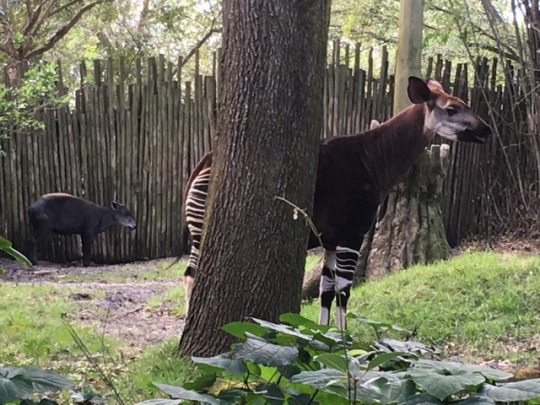
1 note
·
View note
Photo
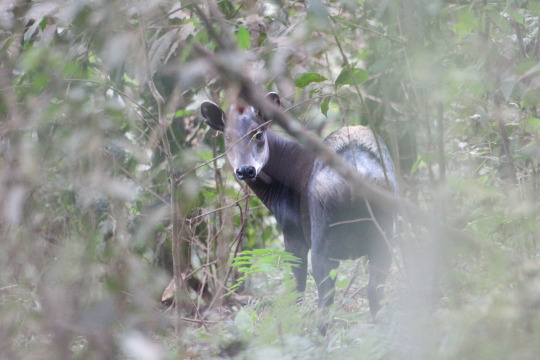
Yellow-backed duiker Cephalophus silvicultor
Observed by biancazoletto, CC-BY-NC
2 notes
·
View notes
Text
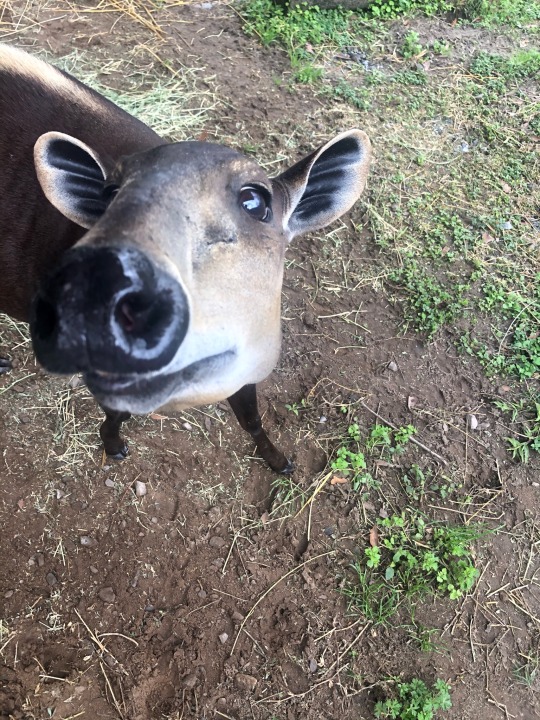
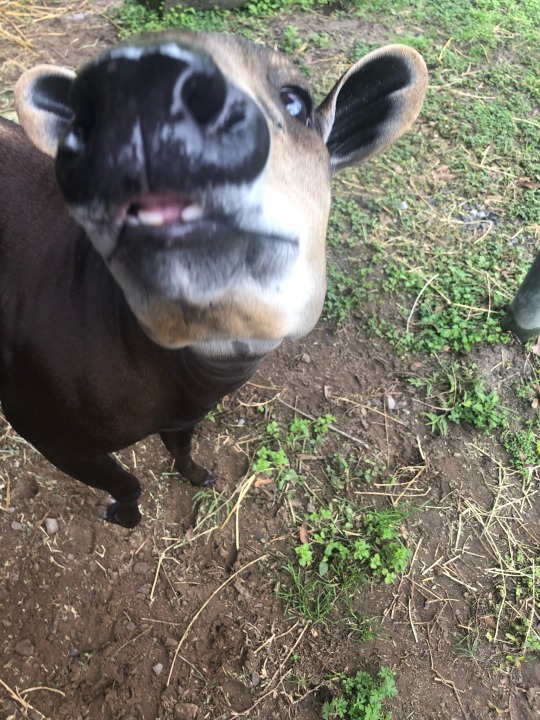

Before I took this internship I didn’t even know yellow backed duiker existed, and during most of it these girls didn’t trust me. Now right as I’m leaving they warmed up to me 😭
#duiker#I may or may not have been holding a carrot above my phone to get these#Joon is the most skittish out of all 3 girls but she finally let me hand feed her without her ruff spiking up!!#zookeeping
17 notes
·
View notes
Text
8 DAYS AFRICA VACATION/HOLIDAY
his is the classic Kenyan safari offering you 2 nights at samburu national park with game viewing opportunities, a chance to experience the fabulous flamingos of the lovely Rift Valley Lake Nakuru, the world famous Masai Mara reserve, Lake Naivasha which is a beautiful freshwater lake, fringed by thick papyrus and crown your safari with Amboseli national park with its majestic backdrop of Mt Kilimanjaro promising postcard perfect photos.
You'll be collected from the airport (or hotel).
Accommodation before the tour departs can be arranged for an extra cost.
Day 1: Nairobi / Samburu Game Reserve
Drive north to Samburu on the south bank of the Uaso Nyiro River, downriver from Archer’s Post to arrive at the Lodge for lunch and afternoon game drive. North of the Equator some of the animals and vegetation are a little different from those commonly found south. Elephant, black rhino, lion, buffalo and cheetah and the usual buck and antelopes are common to both north and south of the equator. However unfamiliar animals are the Gravy’s zebra, the reticulated giraffe and the Somali ostrich. There is also the long neck gerenuk, Beisa Oryx, and hunting dog. Crocodiles in the river can be seen from the lodge/tented camp. The vegetation is usually dry grass with a few swampy patches. There is some forest cover along the Uaso Nyiro River and an abundance of doum palms. All meals, Lunch, Dinner and Overnight at the Lodge.
Main Destination: Samburu Game Reserve
Accommodation: Samburu Sopa Lodge
Standard Lodge located Just Outside Samburu NR
Meals & Drinks: Lunch & dinner (Breakfast not included)
Drinking water (Other drinks not included)
Day 2: Samburu game reserve
After breakfast, another day in this harshly beautiful terrain where wildlife abounds especially nears the river which is their only source of drinking water. The Uaso Nyiro River flows gently through the dry landscape sustaining life in this harsh land. Shaba National Reserve is where the famous conservationist George Adamson did his research on lions. In the Afternoon you will set out on another game drive and return to the lodge for dinner and overnight.
Main Destination: Samburu Game Reserve
Accommodation: Samburu Sopa Lodge
Standard Lodge located Just Outside Samburu NR
Meals & Drinks: Breakfast, Lunch & dinner (Drinks not included)
Drinking water (Other drinks not included)
Day 3: Samburu / Lake Nakuru
After breakfast the tour leaves for Nyahururu (Thompsons Falls) at an altitude of 7,738 feet. The falls are named after the Scots explorer Joseph Thompson who was the first European to discover the falls in 1884.
Then comes the descent into the Great Rift Valley to Lake Nakuru National park for lunch at one of the hotels.
An afternoon drive in the park to enjoy the sight of pelicans bathing in the fresh water streams which terminate in Lake Nakuru. Since there is no existing drainage, Lake Nakuru is alkaline, the perfect place for flamingos to feed on the blue-green algae. The greater flamingo attains a height of about 4.26 feet its plumage is almost white with a pale pink, black tipped beak. It is the lesser flamingo that has the more exotic color. This Park has a great variety of bird life which includes the Egyptian goose and a variety of ducks that come from Europe to winter, its truly a bird watchers paradise. The park is also a sanctuary for the white rhino and other wild game. Return to the Lodge for Dinner and Overnight.
Main Destination: Lake Nakuru national park
Accommodation: Lake Nakuru Lodge
Standard Lodge located Inside Lake Nakuru n.p
Meals & Drinks: Breakfast, Lunch & dinner (Drinks not included)
Drinking water (Other drinks not included)
Day 4: Lake Nakuru / Masai mara
After breakfast, drive to Masai mara game reserve to arrive in time for lunch at the lodge. Masai mara is “Kenya’s finest game reserve. Pass through the lower scenic mau escarpment road into the Rift Valley to the 1792 square, a distance of 275-320kms via Narok town climbing the Hemingway's wall “The Serengeti plains"this park actually forms the northern part of the Serengeti national park in Tanzania. Masai Mara National Reserve to arrive in time for lunch. The afternoon is spent on a game drive in search of the black manned lions which the park is famous, Lion making a kill can be witnessed in the late afternoon or a leopard in a tree enjoying the meal he has dragged up to avoid disturbance and detection. This reserve has hilly savanna, rolling grasslands, gallery forest on the Mara River and its tributaries. Return to the lodge for dinner and overnight.
Main Destination: Masai Mara Game Reserve
Accommodation: Masai Mara Sopa Lodge
Standard Lodge located just outside Masai Mara Game Reserve
Meals & Drinks: Breakfast, Lunch & dinner (Drinks not included)
Drinking water (Other drinks not included)
Day 5: Masai mara game reserve
After breakfast, full day of game viewing. Exploration this part of the Northern Serengeti Ecosystem where the great wildebeest migration takes place at the beginning of August. Months before the actual migration the herds ‘assemble’ in Serengeti in readiness for the crossing into Masai Mara. The plain is literally covered with these animals. Grunts and other animal sounds are heard, and territorial fights are commonplace.
Africa has a long history of capturing the imagination of travelers, a continent of dramatic contrasts that gives you an unforgettable and remarkable experience whether it’s in an amazement of watching thousands of wild beasts struggling across a rushing river that is littered with crocodiles waiting for their prey, makes the world’s premier wildlife spectacle. Lion making a kill can be witnessed in the late afternoon or a leopard in a tree enjoying the meal he has dragged up to avoid disturbance and detection. All meals and Overnight at the Lodge.
Main Destination: Masai Mara Game Reserve
Accommodation: Masai Mara Sopa Lodge
Standard Lodge located just outside Masai Mara Game Reserve
Meals & Drinks: Breakfast, Lunch & dinner (Drinks not included)
Drinking water (Other drinks not included)
Day 6: Masai mara / Lake Naivasha
After breakfast, drive to Lake Naivasha, along the floor of the Rift valley, now with more familiar memories of the landscape; arrive for lunch at the lodge, afternoon proceed on your adventure to various attractive features and places in Lake Naivasha. Much of the lake is surrounded by forests of the yellow barked Acacia Xanthophlea, known as the yellow fever tree. These forests abound with bird life, and Naivasha is known as a world class birding. The waters of the lake draw a great range of game to these shores. Giraffes wander among the acacia, Buffalo wallow in the swamps and Colobus monkeys call from the treetops while the Lakes large hippo population sleeps the day out in the shallows. The region surrounding the Lake is well worth exploring.
Optional activities and excursions in Lake Naivasha
1 hour boat ride : USD 20. - Per person
2 hours walking safari on Crescent Island Sanctuary : USD 45.-per person
Walking /biking safari at Hells gate national park : USD 45.- per person.
Main Destination: Lake Naivasha
Accommodation: Lake Naivasha Sopa Resort
Standard Lodge located along the Shores of Lake Naivasha
Meals & Drinks: Breakfast, Lunch & dinner (Drinks not included)
Drinking water (Other drinks not included)
Day 7: Lake Naivasha / Amboseli
After breakfast, check out and drive to Amboseli national park; the journey continuous south, passing through the Athi Plains where formerly the Burchell's zebra, the Masai giraffe and smaller herbivores roamed about freely. With human encroachment the wildlife is confined to game parks.
There is an advantage to this because one has to drive inside a park to be rewarded with the sight of many different species of animals. Amboseli National Park is reached late in the afternoon, for lunch; embark on an afternoon game viewing in the park at the foot of Africa’s highest mountain, Kilimanjaro (19,340 ft). In the late afternoon one is likely to see a lion or cheetah make a kill. Ideal photography opportunities with Mount Kilimanjaro highest mountain in Africa providing a beautiful back drop. Return to the camp for dinner and overnight.
Main Destination: Amboseli national park
Accommodation: Amboseli Sopa Resort
Standard Lodge located Just outside Amboseli national park
Meals & Drinks: Breakfast, Lunch & dinner (Drinks not included)
Drinking water (Other drinks not included)
Day 8: Amboseli / Nairobi
Early morning game drive can be taken in Amboseli when Mt. Kilimanjaro appears from its mantle of clouds. Proceed to the area of Lake Amboseli, which is a wide salt pan, consisting of permanent swamps. This area has much game, large and small, high concentration of Elephant, rhino, buffalo, Burchell's zebra, eland, Masai giraffe and small species of the antelope family the common water buck, klipspringer, Grant’s gazelle, impala, topi, and the diminutive duiker among others. Amboseli offers some of the best opportunities to see African animals because its vegetation is sparse due to the long dry months.
Amboseli national park is home to wild animals, which include the African elephant, buffalo, impala, lion, cheetah, hyena, giraffes, zebra, and wildebeest among other African animals. There is also a host of Kenya birds, both large and small, to see if you keep your eyes open and stop at every sighting. Drive to Nairobi arriving at the airport in the late afternoon.
Main Destination: Nairobi
Accommodation: No Accomodation Provided ( End of Tour)
Standard Lodge located Just outside Amboseli national park
Meals & Drinks: Breakfast (Lunch, Dinner not included)
Drinking water (Other drinks not included)
Additional accommodation can be arranged for an extra cost.
You'll be dropped off at the airport (or hotel).
Lodge / camp name Cost Per Person Sharing
Luxury5 star Rated Lodges/ Camps 2 pax 4 pax 6 pax
Jan - March $1,970 $1,685 $1,590
April- June $1,660 $1,370 $1,270
July-October $2,480 $2,190 $1,940
November- 20.December $1,970 $1,685 $1,590
Standard 4 Star Lodges/ camps 2 Pax 4 Pax 6 Pax
January - March $1,810 $1,520 $1,425
April- June $1,640 $1,370 $1,285
July - October $2,180 $1,800 $1,710
November - 20. December $1,810 $1,520 $1,425
Mid-range 3 star Lodge/camps 2 Pax 4 Pax 6 Pax
January - March $1,640 $1,390 $1,285
April- June $1,480 $1,260 $1,160
July-October $1,970 $1,670 $1,550
November- 20.December $1,640 $1,390 $1,285
( Low Budget / Basic camps) 2 Pax 4 Pax 6 Pax
January - March $1,360 $1,130 $975
April- June $1,330 $1,100 $945
July-October $1,430 $1,190 $995
November- 20.December $1,360 $1,130 $975
Included
Park fees (For non-residents)
All activities (Unless labeled as optional)
All accommodation (Unless listed as upgrade)
A professional driver/guide
All transportation (Unless labeled as optional)
All Taxes/VAT
Round-trip airport transfer
Meals (As specified in the day-by-day section)
Drinking water (On all days)
Excluded
International flights (From/to home)
Additional accommodation before and at the end of the tour
Tips (Tipping guideline US$10.00 pp per day)
Personal items (Souvenirs, travel insurance, visa fees, etc.)
Government imposed increase of taxes and/or park fees
Some meals (As specified in the day-by-day section)

1 note
·
View note
Text
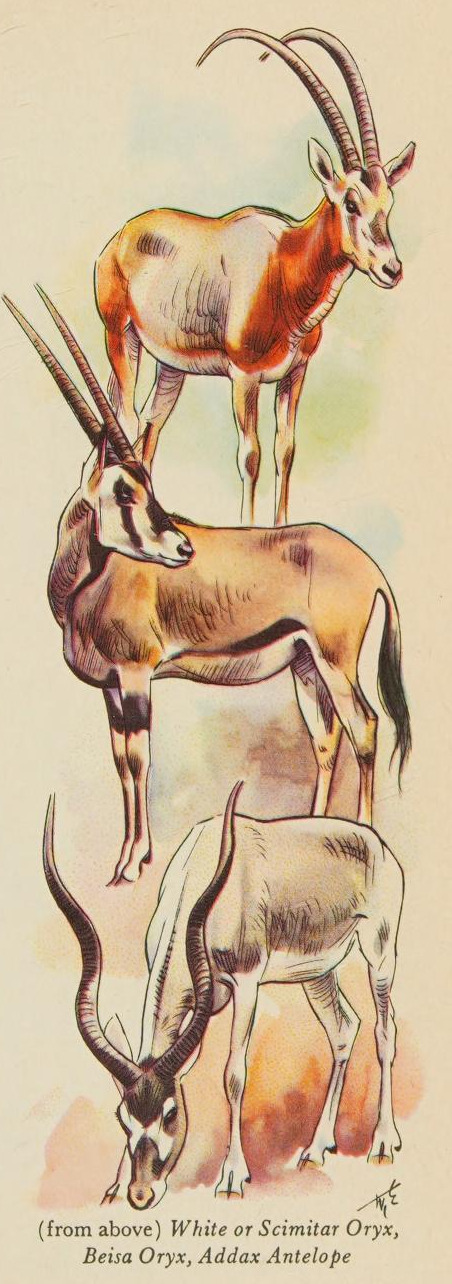

Mammals of the World. Written by Hans Hvass. Illustrated by Wilhelm Eigener. 1975.
#bovids#antelope#oryx#scimitar oryx#beisa oryx#addax#klipspringers#duikers#yellow backed duikers#royal antelope#red flanked duikers#Wilhelm Eigener
240 notes
·
View notes
Text

Glo-Up Time
#yellow backed duiker#duiker#paper dolls#papercraft#art#artists on tumblr#articulated doll#art progress
2 notes
·
View notes